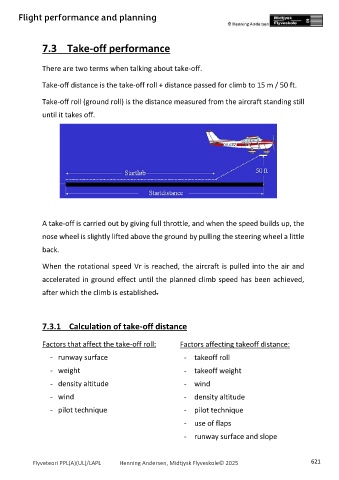Page 621 - engelsk
P. 621
Flight performance and planning
7.3 Take-off performance
There are two terms when talking about take-off.
Take-off distance is the take-off roll + distance passed for climb to 15 m / 50 ft.
Take-off roll (ground roll) is the distance measured from the aircraft standing still
until it takes off.
A take-off is carried out by giving full throttle, and when the speed builds up, the
nose wheel is slightly lifted above the ground by pulling the steering wheel a little
back.
When the rotational speed Vr is reached, the aircraft is pulled into the air and
accelerated in ground effect until the planned climb speed has been achieved,
after which the climb is established.
7.3.1 Calculation of take-off distance
Factors that affect the take-off roll: Factors affecting takeoff distance:
- runway surface - takeoff roll
- weight - takeoff weight
- density altitude - wind
- wind - density altitude
- pilot technique - pilot technique
- use of flaps
- runway surface and slope
Flyveteori PPL(A)(UL)/LAPL Henning Andersen, Midtjysk Flyveskole© 2025 621

